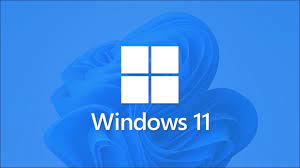
The Price of Windows 11 and Its Impact on Home Users
The process of upgrading to a new operating system can seem like a leap into the unknown, especially for large teams that depend on seamless technology to maintain efficiency. With the release of How much is Windows 11 , many businesses are considering the financial consequences of switching. Although the most recent OS provides fresh design and new features, knowing the true cost is essential for informed decision-making.
Initial Investment and Licensing Costs
For large teams, the upfront investment in Windows 11 is often significant. Companies must consider the cost of new licenses, which could differ in accordance with the amount of people using it as well as the agreements they have with Microsoft. Companies utilizing older hardware might be faced with additional costs, since Windows 11 has specific system requirements, possibly necessitating upgrades to hardware. In comparing these costs to the benefits that will come from improved performance and security is essential in assessing the return on investment.
Impact on Productivity and Efficiency
Windows 11 promises an intuitive user interface that is designed to increase efficiency and streamline workflows. For large teams the efficiency gains may offset some of the financial outlays that come with the upgrade. The new snap layouts and virtual desktops facilitate multitasking as well as the integrated Microsoft Teams aims to enhance collaboration. However, it’s important to weigh these benefits in comparison to the steep learning curve as well as potential downtime during the transition period. A thorough cost-benefit analysis will help you determine if efficiency gains are worth the initial expenditure.
Long-Term Savings and Value
In the long-term the long run, moving to Windows 11 could result in savings by reducing maintenance costs and improved cybersecurity features. The latest OS boasts advanced security protocols and automated updates that can reduce the likelihood of costly data breaches and technical issues. In addition, the compatibility with the latest software advancements ensures that large teams remain on top of technological advances, possibly creating more value over time. By analyzing both immediate and future savings, organizations can make a smart decision that is compatible with their financial goals as well as operational requirements.
In conclusion, the financial implications of upgrading to Windows 11 for large teams include balancing the initial cost, the potential for productivity as well as long-term savings. By carefully evaluating these elements, businesses can make a sound decision that is in line with their expansion and strategies for innovation.